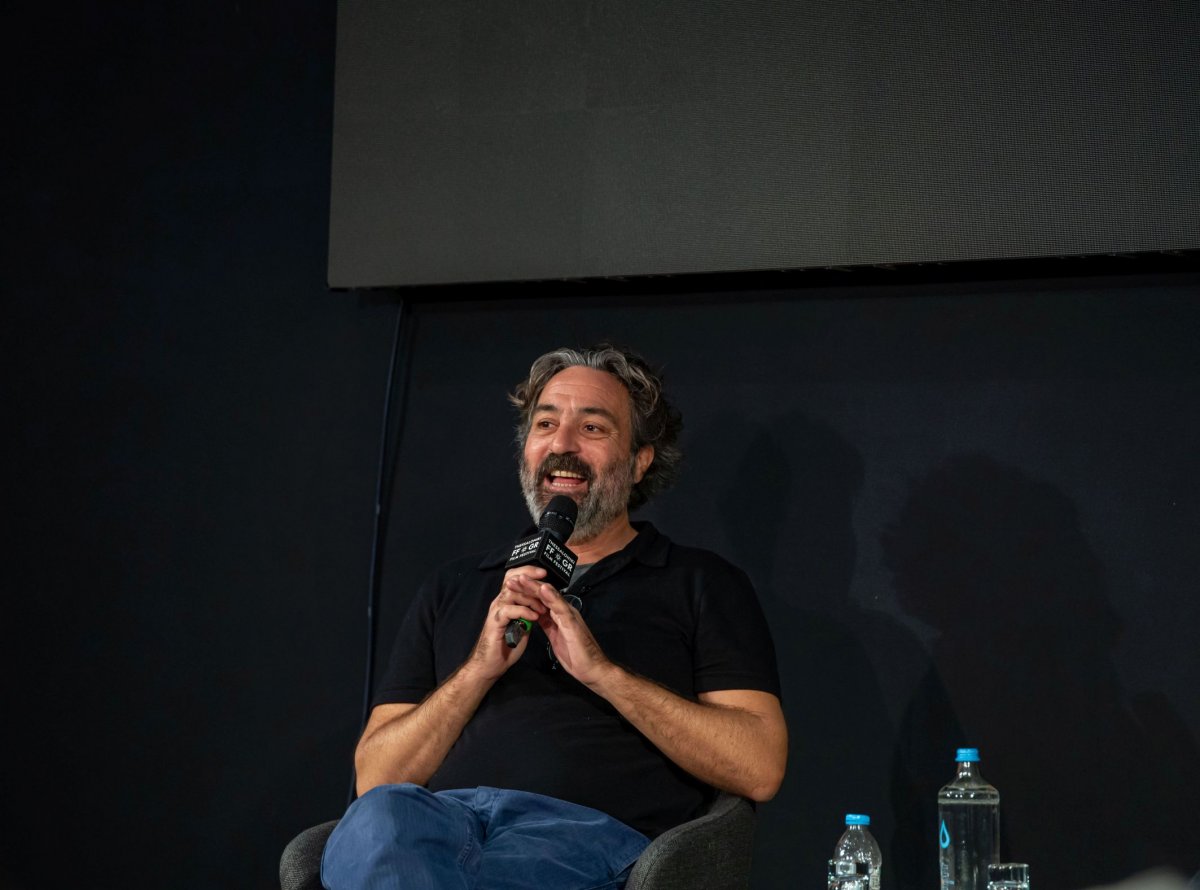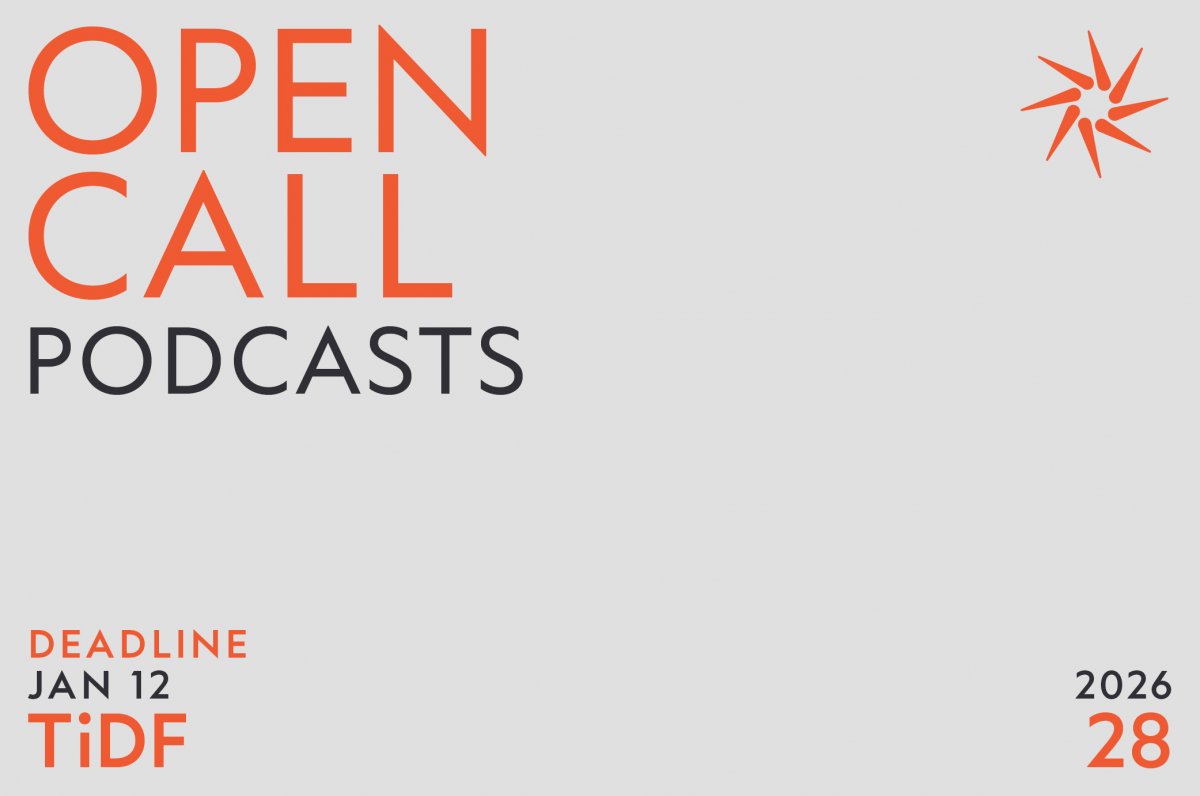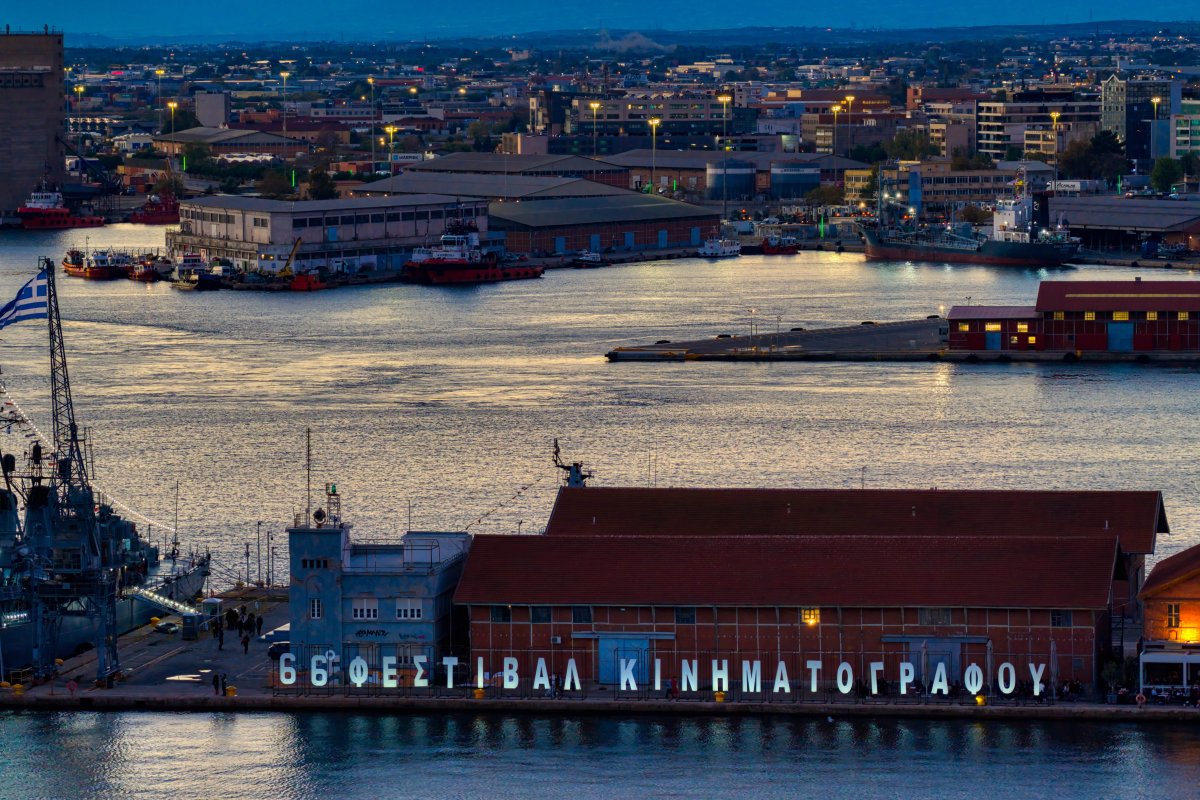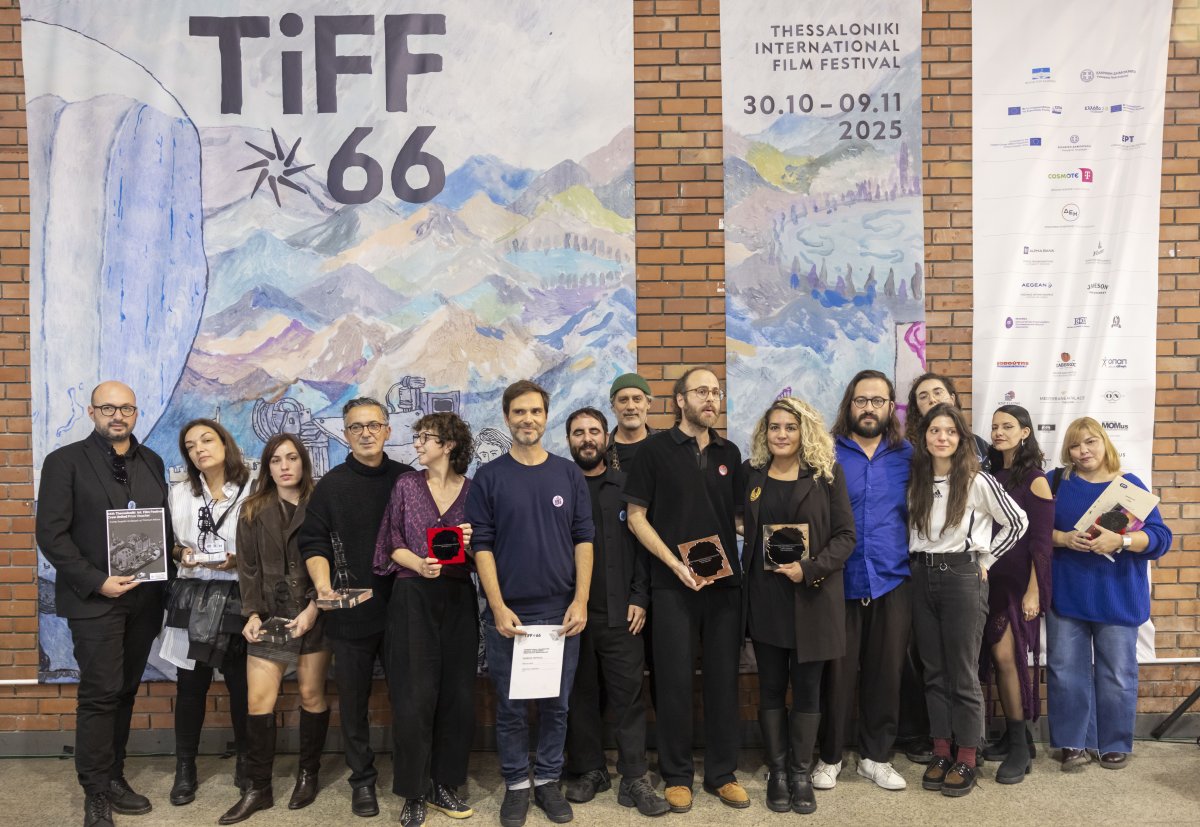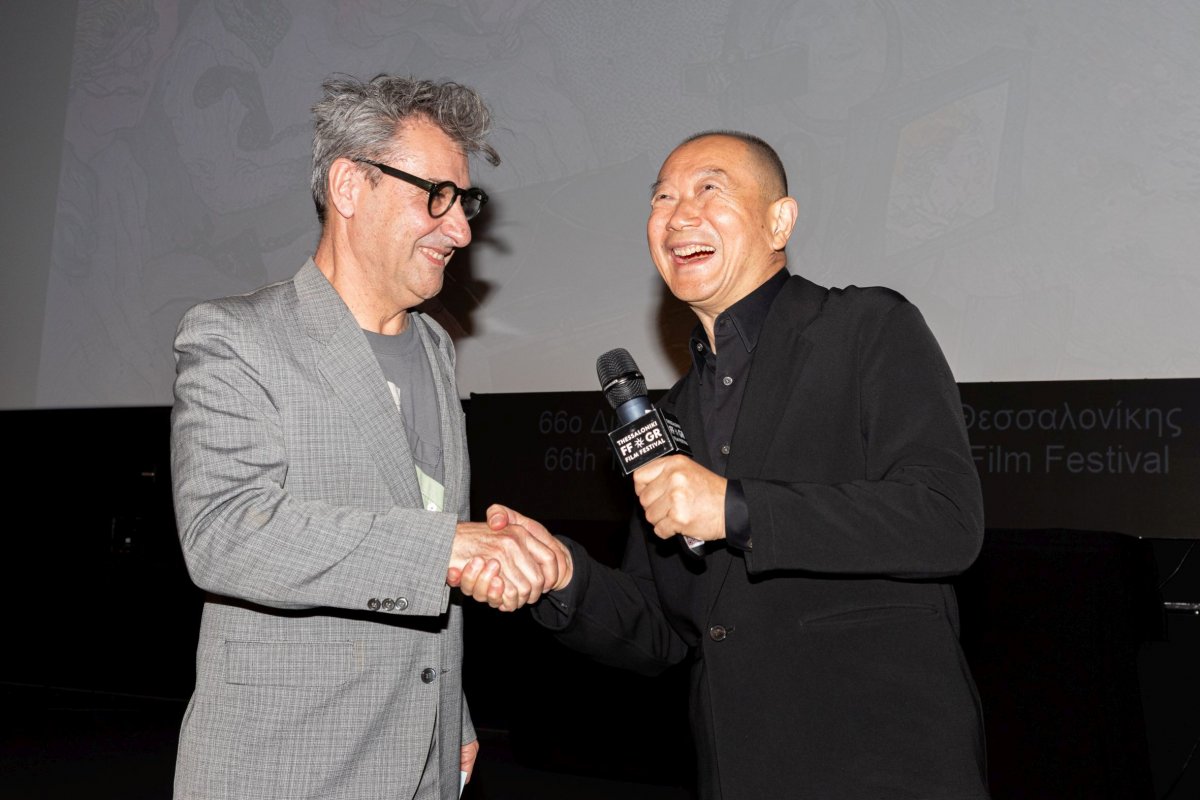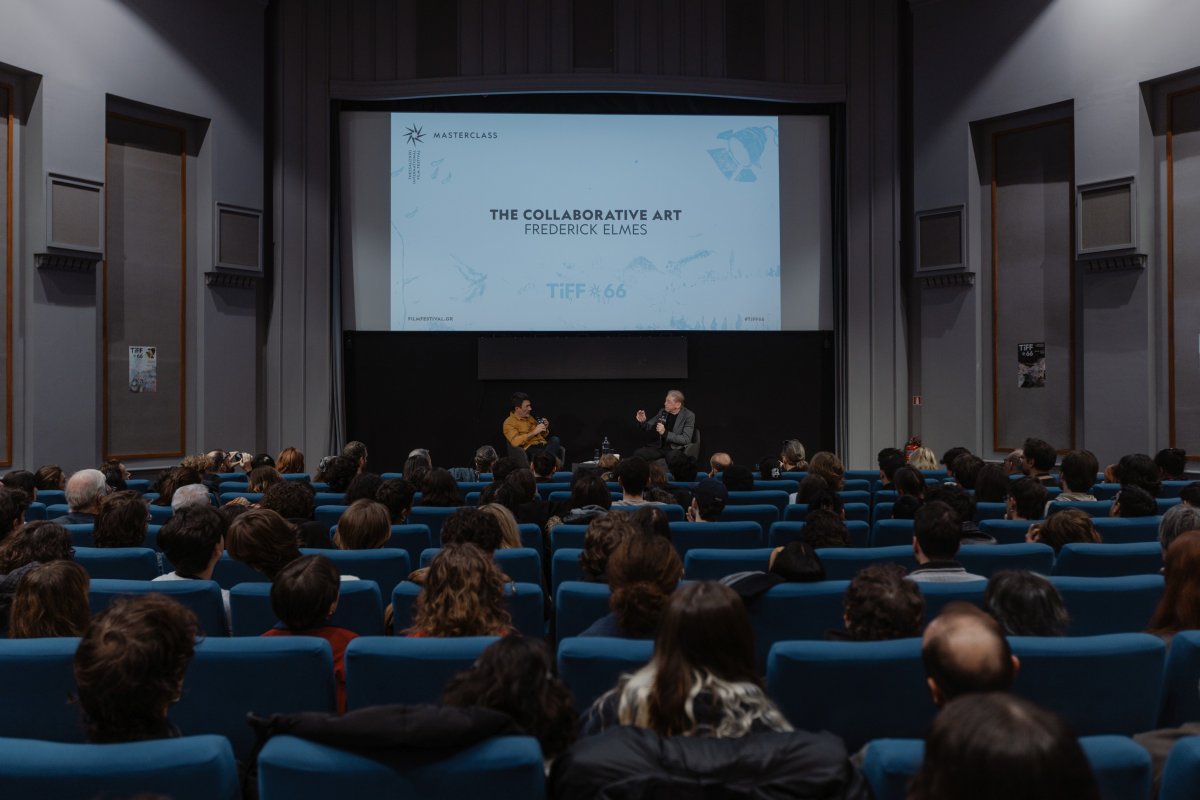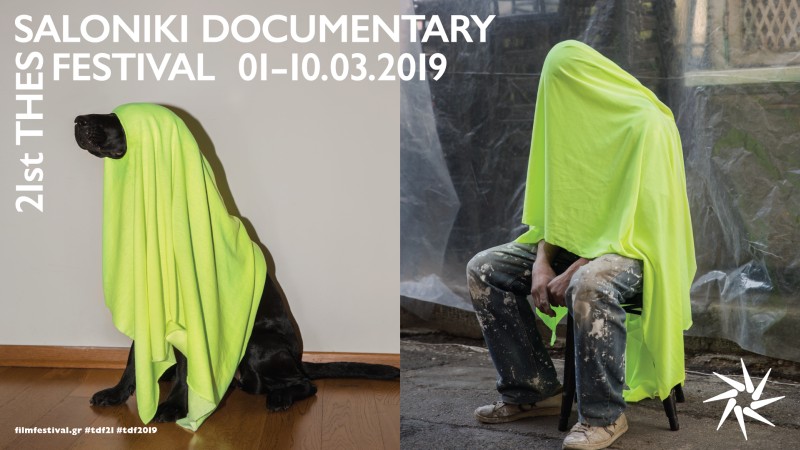The 66th TIFF’s Agora Series Masterclass, titled “From Page to Screen, with Saverio Costanzo, on Making My Brilliant Friend” was successfully held on Sunday, November 2nd, in the Pavlos Zannas theater. During the event, which was moderated by film critic, Poly Lykourgou, the acclaimed director and scriptwriter Saverio Costanzo analyzed the creative process he experienced as a director, creator, and showrunner of the series My Brilliant Friend, HBO and Rai’s internationally celebrated adaptation of Elena Ferrante’s novel of the same name. More precisely, the Italian filmmaker spoke about the challenges in bringing a richly layered literary world to the small screen, and in building a compelling television narrative.
In addition to My Brilliant Friend, which is an adaptation of Elena Ferrante’s titular novel, part of the critically acclaimed Neapolitan Novels book series, Saverio Costanzo is known in cinema for his films Private (2004, Golden Leopard and the Ecumenical Jury Special Mention at the Locarno Film Festival) and Hungry Hearts (2014, Competition Section at the Venice Film Festival). He has also directed the adaptation of the popular series In Treatment for Italian television (2013-2016).
“It is a great honor and pleasure for us to talk with such a renowned director and scriptwriter, who will guide us through the creative process of such a much-discussed television series that takes us on a journey of epic dimensions while also touching on deeply personal issues,” Poly Lykourgou initially stated upon welcoming the audience. For his part, Saverio Costanzo said that he has visited Greece many times, while simultaneously expressing his great joy at being present at this year's Festival.
Taking the relationship of Saverio Costanzo with Elena Ferrante’s literary work as a starting point, as well as the author herself, and saying that his first attempt to bring a novel of hers to life on screen was in 2007 with The Lost Daughter, which ultimately constituted Maggie Gyllenhaal’s debut in 2019, he divulged: “I always loved Elena Ferrante’s work. After my second film, I fell in love with The Lost Daughter, and as such I tried to approach it through her agent and learn if the book’s copyrights had been purchased so that I could make the adaptation. She was very kind and generous, granting me the rights free of charge for six months so that I could work on the script, clarifying that she is open to discussion if it led to a satisfying outcome. Unfortunately, despite the great effort I put in, I don’t do that well with flashbacks, and I couldn’t find a way to make the narrative linear. When I explained that I couldn’t do it and apologized, she didn’t reply,” the filmmaker recounted. After this not-so-successful first encounter, the fact that the author selected him for the adaptation of her celebrated tetralogy was, for him, undoubtedly an unanticipated surprise. “I remember the morning I received the call from Elena Ferrante’s agent quite clearly, as he informed me that the author wishes for me to bring the Neapolitan Novels to the big screen. Until that point, I had read those books solely as a reader, without exploring a directorial approach,” he remarked.
Saverio Costanzo’s first experience in this specific field came with the “commercially unsuccessful,” as he described it, adaptation of Paolo Giordano’s book The Solitude of Prime Numbers in 2010. “The book’s avid readers and admirers think I destroyed it. I had my own concept of how I wanted to construct the story, but when you disappoint so many people you tell yourself you’ll never try your luck again with a bestseller. So, you understand that when I received the phone call from Elena Ferrante’s agent, I thought I would relive the same things, and to an even worse degree, since this book holds a prominent position in the dawning of a new feminism,” Saverio Costanzo pointed out. At that time, he decided to read the books anew, but this time through a filmmaker’s perspective: “I thought I could do it, and that idea made it difficult for me to refuse, but at the same time I was very afraid. The main reason I accepted was the fact I felt at ease with the characters; I constantly had the sense that I had something in common with them.”
Then, Poly Lykourgou pointed out that Ferrante’s books have a very dedicated following while asking Saverio Costanzo whether this popularity scares him or if he sees it as a challenge. “This wasn’t a cynical choice on my part; my motivation wasn’t to do something successful. I simply knew that there was a connection between what I had created in my mind and what Ferrante wanted to create. I really felt like I was stepping into the shoes of the two protagonists. I thought that if I rejected the project, I would lose an opportunity to become a better person,” Mr. Costanzo disclosed. Immediately afterwards, he provided insights on Elena Ferrante’s entire body of works: “For me, Ferrante was something dangerous and dare I say I like danger. My theory is that she mostly crafts vertical books, short in length, that progress from the outside inward, an element that is mostly found in ancient tragedies. The truth is I also like to follow the same path. However, Elena Ferrante did the exact opposite with this book; she turned something vertical sideways and achieved that by writing 2,000 pages instead of 200, transitioning from a tragedy to an epic. I felt she was urging me to do the same, to learn how to transmute the stark truth within a tragedy into something far more pleasant for the audience, without losing the essence of the story along the way.”
Subsequently, Poly Lykourgou referred to the real identity of Elena Ferrante, which is shrouded in mystery – seeing as she has adopted a nom de plume – wondering to what extent this absence of direct contact influenced the creative dialogue between the author and the scriptwriter. “In the first and second season, we communicated exclusively via email. It wasn’t easy, though it was a crucial component of the process. Elena Ferrante was always resolute in her opinions, but she was never conservative. On the contrary, she was always open to change because she understood that in such an adaptation, the only way not to change anything is to change everything. When I shared my casting choices with her, for example, she had objections, but she was also able to see where I was coming from and let me do things the way I know how. Of course, she was usually the one who was in the right, but she let me figure it out on my own, without pointing it out.”
He himself has rejected the theory that she is not a woman, an assessment that Ms. Lykourgou described as a truly feminist stance, attributing it to his instinct as a writer. “I remember that in the third season, I wasn’t ready to direct yet and I was pondering how to continue the series. I asked her then, why she didn’t choose a female director and she answered the following: ‘You can’t blame a woman for anything, but I can blame you.’ Essentially, what we did was create tension between a man and a woman, and emerging from this friction was an equal relationship, an element that in a way feminism seeks. I understand why she chose me, and why this choice worked,” he noted.
Upon addressing the scriptwriting process and how he managed to unearth the cinematic storytelling intricately woven within the literature, Saverio Costanzo spoke about his attempt to bring the density of Ferrante’s literary style to the cinematic format. “When you have characters with such intense psychological coherence thanks to the density of the work, you must convey in a single scene what happens in four scenes of the book. The character enters the scene in question in a certain way and leaves it completely different. This very transformation is cinema in its purest form, like the great cinema of Kubrick or Scorsese. The characters don't just say their lines and leave, they stay. And when you stay, you are forced to go very deep - this is where the sense of tragedy lies. Cinema may adopt the ‘show, don't tell’ approach, but words carry an action within them. I feel that the density of the book is present, because when you tell instead of show, you hold the audience in place and let the actors face what is happening, rather than letting them simply run away from what frightens them. No one minds its slow pace because at the same time, you, as a spectator, are in action, confronting yourself. Of course, this only happens when you have such rich and coherent source material at your disposal, and such a great cast,” he emphasized, before referring to certain specific characteristics of this production. “The Neapolitan language was a very specific part of the overall design, and we are very pleased because the locals told us that the Neapolitan in the series were flawless. When you craft something with an element so deeply rooted in a local culture, its very authenticity is what ultimately makes it universal," he concluded.
Next, the speaker referred to “character storytelling,” which served as the guiding principle behind the casting selection: “Rai, which is the co-producer along with HBO, wanted big names, but I explained to them we already had the big name we needed, and of course I was referring to Elena Ferrante. To convince them, of course, I pretended that this was her own request. It took us a year to find the cast, but we wanted to give the audience real people, not just another series of faces. Nowadays, our screens are filled with the same faces, which you almost can't tell apart.”
In each of the series’ four seasons, a different directorial approach follows the style of each era, from Italian Neorealism to the American cinema of the 1970s, in an attempt to solve the enigma of memory: what do we remember from each era? “In the first season, we decided to create something close to the grammar of 1950s cinema, to have color without color, to work without close-ups, to move within the framework of Neorealism. Of course, because of the mafia, we couldn't shoot in certain locations, so we ended up building an entire neighborhood, which was the exact opposite of Neorealism; in a way, we followed in Fellini's footsteps. In the second season, we move into the era of economic recovery, so the colors become more intense as we "run" alongside the characters. In the third season, we have two conflicting cinematic grammars, as the coveted freedom of the 1970s is irretrievably lost. In the fourth season, I wondered what the most pivotal film of the late 20th century was. Pulp Fiction, for example, is a mixture of all the previous eras. I couldn't find a film that similarly characterized the next era. To put it simply, how feasible is it to name a film that captures the essence of the era from 2000 to 2010? Cinema is searching for its identity, as by definition it represents people living in the here and now, and the crisis is reflected in the lack of a Canon',” the filmmaker added.
The discussion was then opened to the audience, with Saverio Costanzo referring, among other things, to his creative collaboration with HBO, the co-producer of the series, as well as to the contribution of composer Max Richter in the soundtrack: “HBO has a very wide artistic range, without this meaning that they do not operate within a very strict, typically American framework. In our case, of course, Ferrante's name was very big even by their standards. In truth, however, we had a very good collaboration; they never imposed anything on us. When we reached the editing stage, their indications were always accompanied by a question mark, since they were open to suggestions. I had the freedom to do whatever I wished because we were aligned, and I think this is due to the very specific character that the Neapolitan Novels have. I listened to Max Richter while writing the script. That's why I wanted him to undertake the music score so badly, since I had HBO's support. I didn't want to have Neapolitan music, it would be like adding sugar to my already high levels of cholesterol, it was imperative for me to have something like a counterbalance from Northern Europe. Richter initially responded in the negative, but I persisted, and in the end, he wrote three pieces that he himself was very pleased with. Similarly, in the second season, I watched many films from the 1960s, including a film by Bertolucci in which he uses Gino Paoli’s song ‘Vivere ancora.’ This was one of the images I wished to convey,” the filmmaker concluded.


